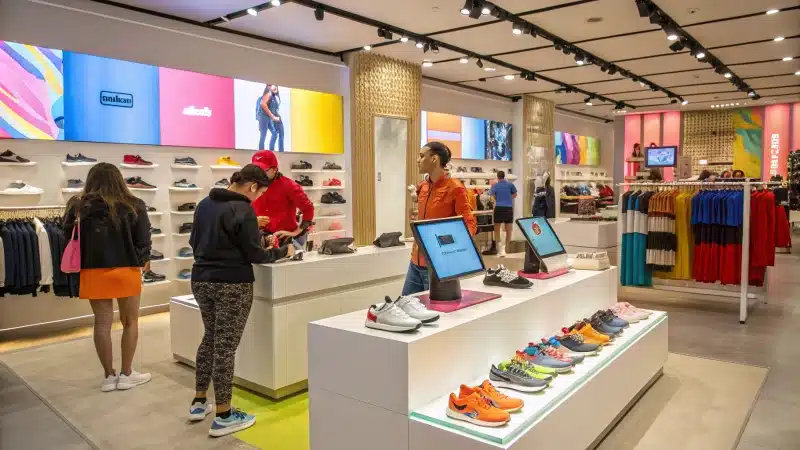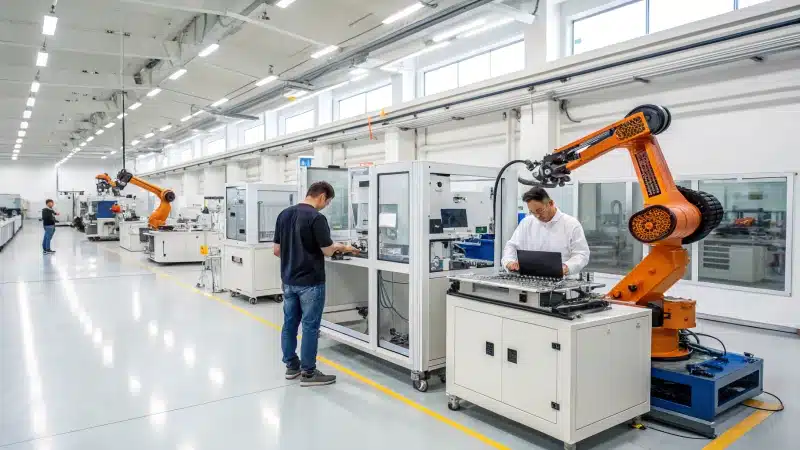
As we look ahead to 2025, the ceramic mug industry is brimming with exciting possibilities and transformative trends. From sustainability to personalization, the market is evolving rapidly.
In 2025, key trends in the ceramic mug industry include sustainability with eco-friendly materials, increased demand for personalized designs, and advancements in technology such as 3D printing.
But there’s more than meets the eye when it comes to these emerging trends. Dive deeper as we explore how these developments are reshaping the industry, offering new opportunities and challenges for businesses.
Sustainability is the top trend in ceramic mugs for 2025.True
Eco-friendly materials are a key focus in the industry.
3D printing will decrease in ceramic mug production by 2025.False
Advancements suggest an increase, enhancing design capabilities.
How Is Sustainability Shaping Ceramic Mug Designs?
Sustainability is not just a buzzword in the ceramics industry; it’s transforming how ceramic mugs are designed. From eco-friendly materials to innovative production techniques, let’s explore how these changes are influencing mug designs.
Sustainability in ceramic mug design involves using eco-friendly materials like recycled clay, adopting energy-efficient production methods, and creating biodegradable packaging. This approach not only reduces environmental impact but also aligns with consumer demand for greener products.

Eco-Friendly Materials
Ceramic mug designs are increasingly incorporating eco-friendly materials such as recycled clay and natural glazes. This trend reflects a growing demand for products that minimize environmental impact1. Recycled clay, for example, reduces waste by reusing excess material from other production processes.
Material Innovations Table:
| Material | Benefits |
|---|---|
| Recycled Clay | Reduces waste and energy consumption |
| Natural Glazes | Free from harmful chemicals |
Energy-Efficient Production
Energy efficiency is another key aspect shaping ceramic mug designs. Manufacturers are investing in new kilns that consume less energy and utilize renewable energy sources. These advancements help lower the carbon footprint of ceramic production and enhance sustainability.
Biodegradable Packaging
The use of biodegradable packaging is becoming standard in the industry, meeting consumer expectations for eco-conscious packaging solutions. This not only helps reduce plastic waste but also aligns with broader environmental goals.
Consumer Demand and Market Trends
As awareness grows, consumers are actively seeking out sustainable products. Ceramic mugs that emphasize their eco-friendly credentials can appeal to this market segment. Consumers are attracted to brands that share their values, making sustainability a competitive advantage.
Moreover, initiatives such as carbon-neutral2 manufacturing processes are gaining traction. These processes not only attract eco-conscious buyers but also set industry standards for sustainable practices.
Challenges and Future Directions
While sustainability offers numerous benefits, it also presents challenges. For instance, sourcing eco-friendly materials can be costlier, affecting pricing strategies. However, as technology advances and consumer demand increases, the cost barriers are expected to decrease.
The future of ceramic mug design lies in continuous innovation towards more sustainable practices, with an emphasis on balancing aesthetics and functionality with environmental responsibility.
Ceramic mugs use recycled clay to reduce waste.True
Recycled clay minimizes environmental impact by reusing excess materials.
Biodegradable packaging is rarely used for ceramic mugs.False
The industry commonly uses biodegradable packaging to reduce plastic waste.
What Role Does Customization Play in Consumer Choices?
In an age where personalization is paramount, customization plays a significant role in shaping consumer choices. Understanding its impact can unlock numerous opportunities for businesses and enhance customer satisfaction.
Customization allows consumers to tailor products to their preferences, enhancing personal connection and satisfaction. It influences purchasing decisions by creating unique experiences, driving brand loyalty, and increasing perceived product value.

The Power of Personalization
Customization provides consumers with the power to mold products to their unique tastes and preferences. This personalization can be seen in various industries, from fashion to technology. For instance, Nike’s customization options3 allow customers to design their own shoes, selecting colors, materials, and even adding personalized text.
This level of control over the final product gives consumers a sense of ownership, making them more likely to purchase. According to a study by Deloitte, 36% of consumers express an interest in purchasing personalized products or services, and 48% are willing to wait longer for such customized offerings.
Enhancing Brand Loyalty Through Unique Experiences
Customization not only impacts initial purchasing decisions but also plays a crucial role in building long-term brand loyalty. When consumers feel that a brand understands and accommodates their individual needs, it fosters a deeper emotional connection.
Brands like Starbucks excel in this area by offering personalized beverage options. Customers can adjust ingredients, sizes, and flavors to suit their taste. This personalization is a key factor in why consumers return repeatedly, as it creates a memorable and enjoyable experience.
| Brand | Customization Example |
|---|---|
| Nike | Design your own shoes |
| Starbucks | Personalized beverage options |
| Levi’s | Tailored jeans and jackets |
| Apple | Customizable device configurations |
Impact on Perceived Value and Willingness to Pay
Another critical aspect of customization is its impact on perceived value. Consumers often associate personalized products with higher quality and exclusivity. This perception can lead to an increased willingness to pay premium prices.
For example, Levi’s made-to-order jeans4 allow consumers to specify measurements, styles, and finishes. Despite being more expensive than off-the-shelf options, these customized jeans are highly sought after due to the perceived value of owning something uniquely theirs.
The influence of customization on consumer behavior underscores the importance for businesses to integrate personalization into their offerings. By doing so, companies can not only enhance customer satisfaction but also differentiate themselves in a competitive market.
36% of consumers want personalized products.True
According to a Deloitte study, 36% of consumers are interested in personalized products.
Customization decreases perceived product value.False
Customization increases perceived product value due to its uniqueness and exclusivity.
Are Technological Innovations Revolutionizing Production?
In today’s fast-paced world, technological innovations are reshaping production across industries. These advancements promise enhanced efficiency, better quality, and sustainable practices. But how transformative are they really? Let’s explore their impact.
Technological innovations are revolutionizing production by streamlining processes, enhancing precision, and enabling customization. Technologies like AI, IoT, and 3D printing are pivotal in transforming traditional manufacturing into more efficient and flexible systems.

The Role of Automation and AI in Manufacturing
Automation and Artificial Intelligence (AI) are leading the charge in revolutionizing production. Automation reduces labor costs and increases output by performing repetitive tasks with precision. AI enhances decision-making by analyzing data to optimize production schedules and predict maintenance needs.
Table: Benefits of Automation and AI
| Benefit | Description |
|---|---|
| Cost Efficiency | Reduces labor costs and operational expenses |
| Precision | Minimizes errors through consistent processes |
| Predictive Maintenance | Uses AI to prevent equipment downtime |
How IoT is Transforming Manufacturing
The Internet of Things (IoT) connects devices, machinery, and systems, allowing real-time monitoring and data exchange. This connectivity enables manufacturers to track production metrics, manage inventory, and ensure quality control with unprecedented accuracy.
- Example: A smart factory uses IoT to monitor machine health and optimize production6 through real-time data analysis.
3D Printing: Customization and Flexibility
3D printing is revolutionizing product development with its ability to create complex structures rapidly. It enables customization without incurring high costs associated with traditional molds. Companies can now produce prototypes swiftly, adjusting designs based on customer feedback.
Explore 3D printing applications7
Sustainability Through Technological Advancements
Innovations in technology also promote sustainable practices by reducing waste and energy consumption. For instance, precision agriculture uses AI to enhance crop yields while minimizing resource use, showcasing technology’s role in sustainable production8.
These advancements illustrate a significant shift in how production is approached, offering a glimpse into a future where technology continues to redefine possibilities.
Automation reduces labor costs in manufacturing.True
Automation performs repetitive tasks efficiently, lowering labor costs.
IoT does not improve quality control in factories.False
IoT enhances quality control through real-time data monitoring.
Why Are Health and Safety Concerns Gaining Importance?
In recent years, the emphasis on health and safety has surged globally. But what is fueling this newfound importance? Delve into the reasons behind this pivotal shift in workplace priorities.
Health and safety concerns are gaining prominence due to heightened awareness of workplace risks, evolving regulations, and the positive impact on productivity and costs. Organizations now prioritize safe environments to foster well-being and efficiency.

The Role of Awareness and Education
Increased awareness about the importance of a safe working environment has played a significant role in elevating health and safety concerns. Educational initiatives and workplace campaigns9 have made employees more conscious of the potential hazards they may face daily.
Evolving Regulations and Compliance
Governments worldwide are continually updating health and safety regulations, compelling businesses to adhere to stricter standards. Failure to comply can lead to severe penalties, motivating companies to prioritize safety.
| Country | Recent Regulation Changes |
|---|---|
| USA | OSHA’s new silica rules |
| UK | Revised PPE standards |
| Australia | Updated WHS laws |
Technological Advancements
Technology has provided new tools for monitoring and enhancing workplace safety. Innovations like wearable tech can alert workers to hazards, while data analytics help identify accident trends, leading to more proactive measures.
Explore more about technological innovations10 in safety management that are shaping the future of workplace environments.
The Business Case for Safety
Investing in health and safety leads to a reduction in workplace injuries, which lowers associated costs such as medical expenses and lost productivity. Moreover, a safer environment improves employee morale, enhancing overall organizational success11.
These factors illustrate why organizations are now embedding health and safety into their core business strategies, recognizing it as a fundamental component of operational success.
Increased awareness reduces workplace accidents.True
Educational initiatives raise hazard consciousness, reducing accidents.
Technological advancements hinder safety improvements.False
Technology enhances safety by providing monitoring and data analysis tools.
Conclusion
The ceramic mug industry in 2025 will focus on sustainability, personalization, technological advancements, and health safety, catering to evolving consumer preferences for eco-friendly and customizable products.
-
Learn about the eco-friendly materials being used in ceramics to reduce environmental impact. ↩
-
Discover how carbon-neutral processes are transforming ceramics manufacturing. ↩
-
Explore how Nike allows customers to personalize their shoes, offering a unique buying experience. ↩
-
Discover Levi’s tailored jeans services that enhance consumer satisfaction through bespoke options. ↩
-
Discover the key advantages of integrating automation into manufacturing processes, including cost savings and increased precision. ↩
-
Uncover how IoT is enhancing efficiency and quality control in modern manufacturing setups. ↩
-
Explore the diverse uses of 3D printing technology across various industries for rapid prototyping and customization. ↩
-
Learn about technologies that are driving sustainable production practices by minimizing waste and energy use. ↩
-
Discover effective strategies for raising awareness about workplace safety through targeted campaigns. ↩
-
Learn about the latest technologies improving safety standards in various industries. ↩
-
Understand how prioritizing safety can enhance productivity and business outcomes. ↩